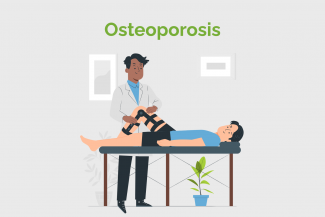
Different types of osteoporosis
• Primary: This is a common type of osteoporosis associated with increase in age, improper diet and lack of physical activities.
• Secondary: This is bone loss that occurs due to the use of certain medications.
• Juvenile osteoporosis: This is rare. It occurs during the ages when bone growth is rapid, ie in the ages 8-14years.
Different stages of the condition
Between the ages of 18 to 30, the bone attains its peak bone mass, ie, bone will reach their maximum strength and density. Later, after 30 years of age, minimal changes start in the bone leading to osteoporosis. This can be staged as:
• Stage 1: This stage begins at around 30-35years, but osteoporosis has not set in.
• Stage 2: This stage is detected after the age of 35 when bone breakdown becomes faster, but symptoms are not yet seen.
• Stage 3: This stage is detected after age 45 when the bones are more prone to fracture from stress they would have withstood earlier.
• Stage 4: This stage may be detected as early as age 55 with fractures and disability that is more obvious.









